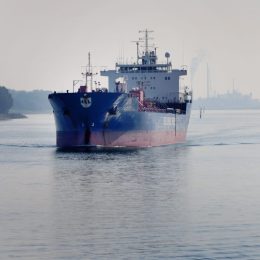Sediment management for accessible ports and waterways
Many ports and waterways are confronted with sedimentation (or, siltation) which reduces the depth of shipping channels, berths, and port basins, which can pose a threat to their navigability. Though sediment management, for example with maintenance dredging or artificial sediment by-passing, ports can be kept accessible. Deltares supports port authorities, waterway managers and contractors to understand the causes of sedimentation and take measures that are effective and optimised in terms of their execution, cost, and impact.
System knowledge is crucial for effective sediment management
System knowledge is crucial to understand the causes of sedimentation and to devise effective measures to reduce the costs and environmental impacts of maintenance dredging in ports and waterways. In the port of Salaverry in Peru, for example, ongoing accretion of a nearby beach proved essential to explain the sudden increase in port sedimentation and the associated increase in maintenance dredging costs.
Our experts have accumulated decades of knowledge and experience relating to effective sediment management in the Netherlands and internationally. We combine our expertise in hydrodynamics, morphology, ecology and geo-engineering. During projects focusing on port sediment management, we use advanced numerical software, such as Deflt3D-FM and Computational Fluid Dynamics (CFD), earth observation technologies such as the Shoreline Monitor, as well as rapid assessment tools for quick and interactive assessments. This enables us to simulate both large-scale and small-scale dynamics in sediment transport.
In addition to costs, dredging activities can have negative consequences for the environment in the form of emissions, dredging plumes and contaminated sediment. In knowledge networks and the working groups of PIANC, CEDAand OSPAR, we work together on guidelines and tools for safe and responsible working practices.
Innovative and sustainable solutions
With the software we develop in-house and unique experimental laboratory facilities, we search for innovative and sustainable solutions in cooperation with our clients and partners. Examples include innovative dredging technologies such as Water Injection Dredging (WID), sediment traps and sailing through fluid mud. This helps to limit costs and emissions from maintenance dredging. In this area, we work with the Port of Rotterdam Authority and Rijkswaterstaat (the Dutch Directorate General for Public Works and Water) in the PRISMA programme.
We also look at Nature-based Solutions, exploiting the forces of nature for effective sediment management. For example, by making smart use of the tides when depositing dredged material to reduce recirculation, or bio-engineering with worms, reducing the time required for fluid mud consolidation.
We are also working with our partners on concepts for re-using dredged material. We test these concepts extensively in our laboratories and in the field. In this manner dredged material can be re-used as clay or bricks for strengthening dikes or revetments on quay walls.



